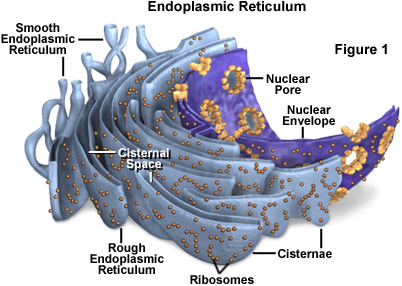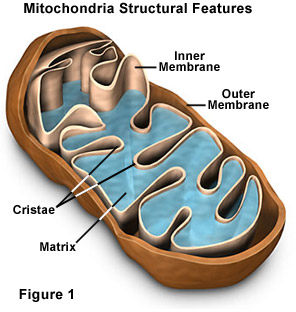The Cell Theory:
The Cell Theory states that all living things are made up of cells and that all cells come from pre-existing cells. It also states that the cell is the basic unit of life - structures and functions.
The cell is a remarkable phenomenon that is the foundation of all life forms. This blog will examine the cell with particular focus on its internal structure.
Let's examine the basic structures that are common amongst both plant and animal cells:
Nucleus - Eukaryotic cells all contain a membrane enclosed structure called a nucleus. This organelle's membrane is perforated by nuclear pores and is continuous with the endoplasmic reticulum.
In terms of function, the nucleus serves as the control center for the cell; it is where the genetic information is stored. In the form of chromosomes, DNA strands are condensed around proteins. Further,the nucleus also contains nucleoli which are responsible for producing ribosomes, which will be discussed later in this blog.
Endoplasmic Reticulum - this organelle is an extensive network of membrane bound tubules and sacs. This membrane separates the inner contents of the endoplasmic reticulum (lumen) from the cytosol. There are two main types of endoplasmic reticulum which differ slightly interms of function and structure: rough and smooth endoplasmic reticulum.
Rough endoplasmic reticulum is covered with ribosomes. It aids in synthesizing proteins, adds carbohydrates to proteins to create glycoproteins and produces new membranes.
Smooth endoplasmic reticulum is responsible for synthesizing lipids, metabolizing carbohydrates, detoxification and calcium ion storage.
Ribosome - ribosomes are composed of two subunits made of ribosomal RNA and protein. They are found either bond to the surface of rough endoplasmic reticulum, or floating in the cytosol of the cell. These ribosomes are called 'free ribosomes'.
In terms of function, the ribosomes role is to synthesize proteins.
Golgi Apparatus - These are stacks of flattened membranous sacs which are polar (have cis and trans regions)
A cell's golgi apparatus is responsible for the modification of proteins, the carbohydrates added to proteins and phospholipids. It is also involved in the synthesis of phospholipids as well as sorting and releasing products in vesicles.
Vacuole - this organelle is a large, membrane bound vesicle.
It is involved in digestion, storage, waste disposal, water balance, cell growth and protection.
Peroxisome - This organelle is defined as a specialized metabolic compartment within the cell which is bounded by a single membrane.
It contains enzymes that can transfer hydrogen atoms to oxygen producing hydrogen peroxide which is then converted to water by yet another enzyme.
Mitochondrion - Known as the cell's powerhouse, the mitochondria is bonded by a double membrane. The inner membrane has a large surface area with many folds called cristae.
This organelle plays a key role in cellular respiration, which we will learn about in a future blog post.
In plant cells ONLY:
Cell wall - This outer layer of plant cells enable them to maintain their shape and serves as a method of protection. Further, it is made mostly of cellulose.
Chloroplast - this photosynthetic organelle can convert solar energy into potential chemical energy which plants and animals rely on to thrive. We will explore this process in a future blog.
In animal cells ONLY:
Lysosome - Lysosomes are known as the cell's 'clean up crew'. They are responsible for digestion. Macromolecules are hydrolyzed within them.
Centrosome - This is a region within the cell where the cells microtubules are initiated. It contains a pair of centrioles and plays a key role in the division of animal cells.
Flagella - This structure is only found in some animal cells. It allows for motility of certain cells. Sperm cells would be an example.







No comments:
Post a Comment